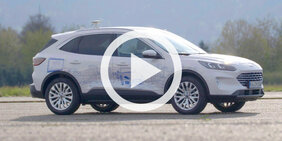Hardware and software communicate with each other: The physical prototype perceives the simulated traffic environment through virtual sensors. The information gained from this process are transmitted to the bus system of the vehicle. The data transfer results in the physical prototype reacting to the events taking place in the simulated traffic environment.
The VIL method allows to test advanced driver assistance systems (ADAS) while saving time and costs – and the driver on board of the physical vehicle can experience it all. The reproducibility and variability of test scenarios enables testing with a high level of integration and allows for a holistic approach for ADAS development – without having a negative impact on test safety.
When it comes to linking our real world with the virtual world, IPG Automotive has been a pioneer for a long time. Our new demo vehicle integrates further ADAS functions as demo options and makes the vehicle-in-the-loop method more accessible to our customers and interested parties. In addition to the PA (park assist), the new demo vehicle also enables the simulation and implementation of AEB (autonomous emergency braking), ACC (adaptive cruise control) and LKA (lane keeping assist) functions. The driver can therefore experience live how ADAS offer support during parking, emergency braking, distance and lane keeping in a virtual environment. Do you want to see how, for example, a park assist system is tested with the vehicle-in-the-loop method?
Take a look at our demo video and experience how the prototype and simulation environment work together!
Find more information and technical details on the VIL method in our white paper!
